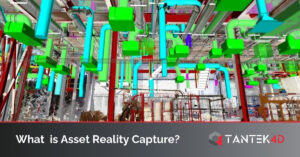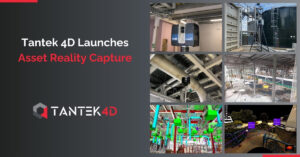The buildings and facilities that you are responsible for constantly evolve. From the moment work first starts to construct the facility right up until today, decisions are made, repairs are carried out, improvements are completed, and alterations are built.
From small repair jobs up to the largest renovation or extension projects, a lack of accurate and complete as-built (or as-is) facility data is costing you time, money, and, probably, stress.
The Inevitability of Change
Change is inevitable in construction projects, whatever the type of facility that is being built. Even with the best plans and drawings, circumstances mean various elements of the project can deviate from the original intention. Examples include:
- Disruption to the supply chains of materials resulting in different brands or products being selected.
- Challenges not anticipated by the architect are identified and resolved during the build.
- Changes in budget.
- Reworked parts of the build.
- On-the-ground alterations made for efficiency, quality, or cost reasons.
The construction phase of a facility’s lifecycle is only the start of the change process, as ongoing change is as inevitable as change during construction.
The Cost Implications of Change
All the changes that take place during the original construction of the facility and throughout its lifecycle result in a range of challenges that have real-world costs. Examples include:
- Reworking designs because the reality doesn’t match the expectation derived from the original drawings.
- Ineffective collaboration between stakeholders because of missing and bad information.
- Paying for the same information over and over again because of the disjointed and uncontrolled way that construction and facility data is handled. For example, a team working on a project might commission survey data that is used but not shared. A different project team on a different project could then commission a survey to get the same data because they don’t know the original version exists. Staff could have left, for example, or the original data might be on a laptop that nobody is aware of.
- More errors and surprises when projects move from design and planning phases to work on-site.
- Increased health and safety risks when workers on site don’t have accurate or complete information.
- Inefficient and sub-par decision-making because decisions are made using inaccurate information, incomplete information, or best estimates.
- Inefficient project planning because of inaccurate information, leading to delays. Project delays have direct cost implications related to the project as well as potential additional costs, such as unplanned facility downtime.
- Increased compliance risks related to building, health and safety, and industry-specific regulations.
- Increased cost planning risks as contractor pricing can change if original estimates are based on inaccurate or incomplete information.
In summary, projects take longer and cost more, both in terms of direct and indirect costs, if you don’t have accurate and complete as-built facility data.
What is As-Built Facility Data?
As-built facility data shows where and how the facility deviates from the original plan. In other words, as-built facility data shows the reality rather than the intention.
Are We Talking About As-Built Drawings?
As-built facility data and as-built drawings are two different things. As-built drawings are often prepared at the end of a construction project and are presented as marked-up construction drawings. The red lines and additional notes demonstrate the as-built deviations from the original plans.
However, as-built drawings can still have considerable inaccuracies, not least because they are manually created. They can also be incomplete, inconsistent, and difficult to fully understand.
As-built facility data is different. It is created using the latest 3D scanning and digital twin technologies to create a highly precise, georeferenced digital representation of the facility accurate to fractions of a millimetre.
This type of as-built facility data solves the accuracy and completeness problems, but it also offers much more as it is dynamic and interactive.
For example, if you need to measure the distance between two points in a room, the original drawings (or the as-built drawings if they are available) can’t be relied on because you can’t be sure they are accurate. This means a trip to the site to take new measurements. With accurate as-built facility data, you can take the measurements you need immediately and without having to travel to the location.
The Difference Between As-Built and As-Is Facility Data
As-built facility data is the common phrase used to describe digital representations and digital twins of buildings and facilities. A more accurate description is as-is facility data. This is because the work carried out to create a digital representation of your buildings today will take into account every change, improvement, alteration, and addition that has been made throughout the building’s lifecycle. In other words, it is an as-is digital representation.
It’s also important to note that the as-is quality of facility data can be compromised without proper controls. To maintain quality and the seamless integration of new data, there should be a master facility digital twin as well as site-wide survey process controls. Those process controls ensure new data is properly integrated into the master facility digital twin and that it all aligns with the relevant national geographic coordinate system.
The Return on Investment of Accurate As-Built Facility Data
Any of the points in the above list can result in additional costs that could easily run into tens of thousands of euros. Take the points in combination or scale them up according to the size of your project, and you could see the cost implications of inaccurate as-built facility data measured in millions of euros.
As a result, accurate and up-to-date as-built facility data should not be viewed as a nice-to-have feature for your project that inflates the cost. Instead, it should be an essential cost-saving component that will deliver an immediate and ongoing return on investment.




